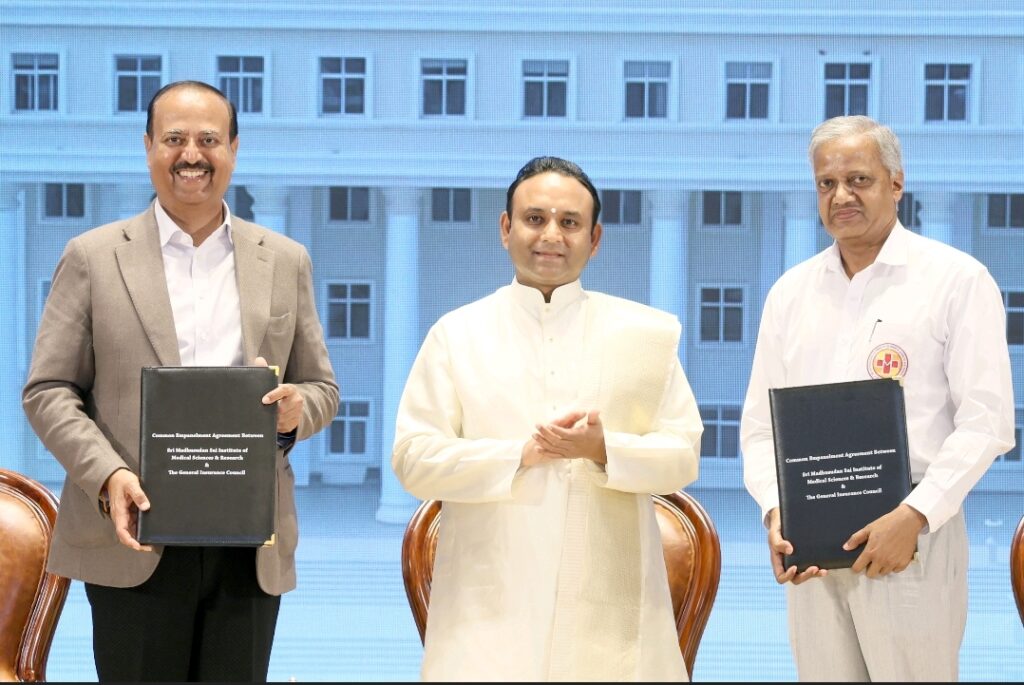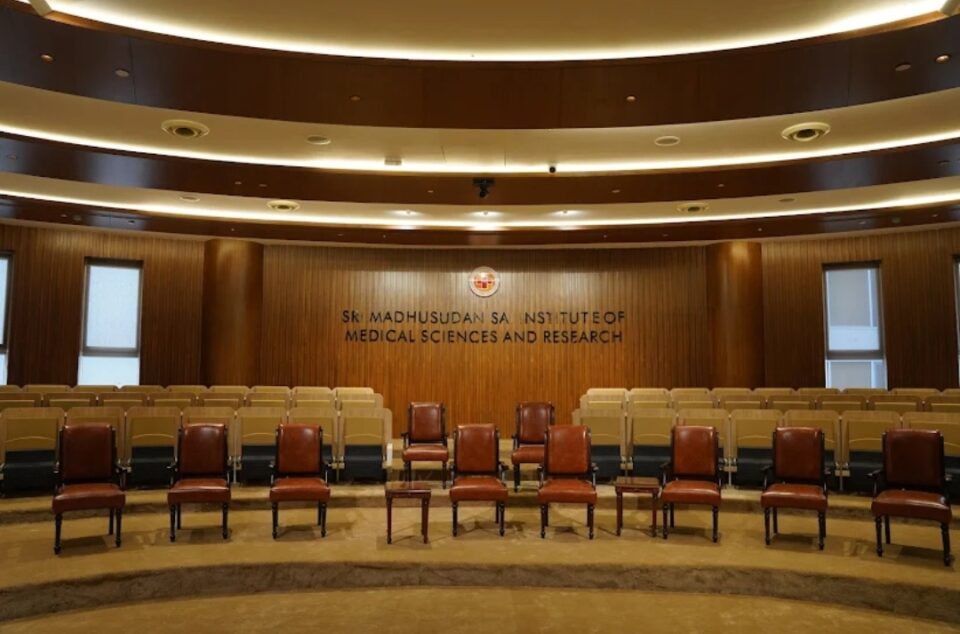Bridging Healthcare Access: How SMSIMSR’s Universal Insurance Empanelment Transforms Customer Experience
Have you ever watched a patient walk into a hospital, insurance card in hand, only to discover their insurer isn’t accepted? This scenario plays out thousands of times daily across India’s healthcare system. Traditional insurance networks create artificial barriers that force patients to navigate complex webs of hospital-insurer partnerships. The result? Delayed care, out-of-pocket expenses, and fractured patient experiences that undermine trust in both healthcare and insurance systems.
This fundamental disconnect between insurer networks and patient needs has long plagued India’s healthcare landscape. Until now.
The Network Barrier Challenge
India’s healthcare insurance ecosystem operates through a fragmented empanelment system where individual hospitals negotiate separate agreements with each insurance company. This creates a maze of network limitations that directly impacts customer experience:
Administrative Complexity: Hospitals must navigate 30 different insurance companies with 30 different platforms, each requiring separate documentation and compliance processes. This administrative burden translates to delayed approvals and confused patients who often don’t understand why their coverage is rejected at certain facilities.
Geographic Limitations: Patients traveling outside their home regions frequently encounter network gaps, forcing them to either pay out-of-pocket or delay treatment. Rural patients face particularly acute challenges, with limited network hospitals in underserved areas.
Financial Barriers: When network hospitals aren’t available, patients must choose between expensive out-of-network care or potentially compromising on quality. Research indicates that less than 25% of outstanding patient dues are recovered once patients leave without paying, highlighting the financial stress these gaps create.
The human cost of these barriers extends beyond inconvenience. Patients experiencing insurance denials report higher stress levels, delayed treatment decisions, and decreased trust in healthcare systems.
SMSIMSR’s Revolutionary Approach
The Sri Madhusudan Sai Institute of Medical Sciences and Research has shattered this paradigm by becoming India’s first hospital to achieve common empanelment with all general insurance companies. This landmark initiative, formalized through a Memorandum of Understanding with the General Insurance Council, eliminates the primary bottleneck in healthcare delivery: patient exclusion due to insurer-specific hospital partnerships.
Universal Access Architecture: Under this model, any insured patient can receive cashless treatment at SMSIMSR regardless of their insurance provider. This represents a fundamental shift from network-based exclusion to universal inclusion.
Streamlined Patient Journey: Patients no longer need to verify network status before seeking care. The common empanelment framework ensures seamless claim processing across all insurance providers, reducing administrative friction and patient anxiety.
Quality Standardization: The initiative establishes uniform service standards and pricing transparency, addressing long-standing concerns about variable care quality and billing practices across different insurer networks.
Customer Experience Transformation
This breakthrough delivers measurable improvements across multiple customer experience dimensions:
Reduced Cognitive Load: Patients no longer expend mental energy navigating network complexities. The cognitive burden of insurance verification shifts from patient to system, creating a more intuitive healthcare experience.
Enhanced Access Equity: Rural and underserved populations gain equal access to quality healthcare without insurance network discrimination. This addresses a critical gap where geographic limitations often determine care accessibility.
Trust Restoration: Standardized processes and guaranteed coverage build patient confidence in both healthcare and insurance systems. When patients know their coverage will be honored, they’re more likely to seek timely preventive care.
Financial Predictability: Clear, standardized pricing eliminates surprise billing and reduces out-of-pocket financial shocks that often accompany network limitations.
The Ripple Effect on Healthcare CX
SMSIMSR’s model creates positive feedback loops throughout the healthcare customer experience ecosystem:
Provider Efficiency: Healthcare providers can focus on care delivery rather than insurance administration, improving both staff satisfaction and patient interactions.
Insurer Relations: Standardized empanelment reduces fraud risk and creates more predictable claim patterns, enabling better risk management and potentially lower premiums.
Technology Integration: Common platforms reduce system complexity and enable better data integration, supporting improved analytics and personalized care delivery.

Industry Implications and Scalability
The success of SMSIMSR’s approach has captured attention from healthcare leaders nationwide. Dr. Tapan Singhel, Chairman of the General Insurance Council and MD & CEO of Bajaj Allianz General Insurance, described the initiative as “a defining moment for India’s insurance and healthcare sectors—one that unites both to serve the citizen first.”
Regulatory Momentum: The Insurance Regulatory and Development Authority of India has already mandated common empanelment initiatives, with the General Insurance Council targeting 4,000-5,000 hospital onboardings in coming months.
Economic Viability: Early indicators suggest that standardized pricing and reduced administrative overhead create sustainable economic models for both hospitals and insurers.
Scalability Framework: SMSIMSR’s model provides a replicable blueprint that other healthcare institutions can adapt to their specific contexts and patient populations.
Overcoming Implementation Challenges
While transformative, common empanelment faces practical challenges that require careful navigation:
Rate Standardization: Hospitals express concerns about uniform pricing potentially impacting quality and sustainability, particularly for institutions with higher compliance costs.
Technology Integration: Legacy systems require significant upgrades to support common empanelment platforms, demanding substantial technology investments.
Change Management: Staff training and process reengineering are essential for successful implementation, requiring dedicated change management resources.
Fraud Prevention: Expanded networks create new fraud vulnerabilities that require robust monitoring and detection mechanisms.
The Future of Healthcare Access
SMSIMSR’s achievement represents more than a single hospital’s innovation—it demonstrates a fundamental reimagining of how healthcare and insurance systems can collaborate to prioritize patient experience. As Sadguru Sri Madhusudan Sai noted, “Healthcare offered as an act of selfless love, without constraints or distinctions, lays the foundation for true social unity.”
This philosophy, combined with practical system reforms, creates a roadmap for healthcare transformation that extends far beyond insurance empanelment.
Key Takeaways for CX Professionals
Eliminate Friction Points: Identify and remove administrative barriers that create customer confusion and delays. SMSIMSR’s success demonstrates how system-level changes can dramatically improve individual experiences.
Prioritize Universal Access: Design services that default to inclusion rather than exclusion. Common empanelment proves that universal access models can be both practical and economically viable.
Standardize for Transparency: Consistent processes and pricing build customer trust and reduce decision-making complexity. Standardization doesn’t mean generic—it means reliable and predictable.
Leverage Technology for Integration: Invest in platforms that enable seamless data sharing and process coordination across multiple stakeholders. Technology should simplify, not complicate, customer interactions.
Measure Impact Holistically: Track not just operational metrics but patient stress levels, trust indicators, and long-term health outcomes. True CX success encompasses both efficiency and human experience.
The transformation achieved by SMSIMSR offers a compelling vision for healthcare’s future—one where institutional barriers dissolve, and patient needs drive system design. For CX professionals across industries, this initiative demonstrates how bold reimagining of traditional processes can create breakthrough improvements in customer experience and social impact.

